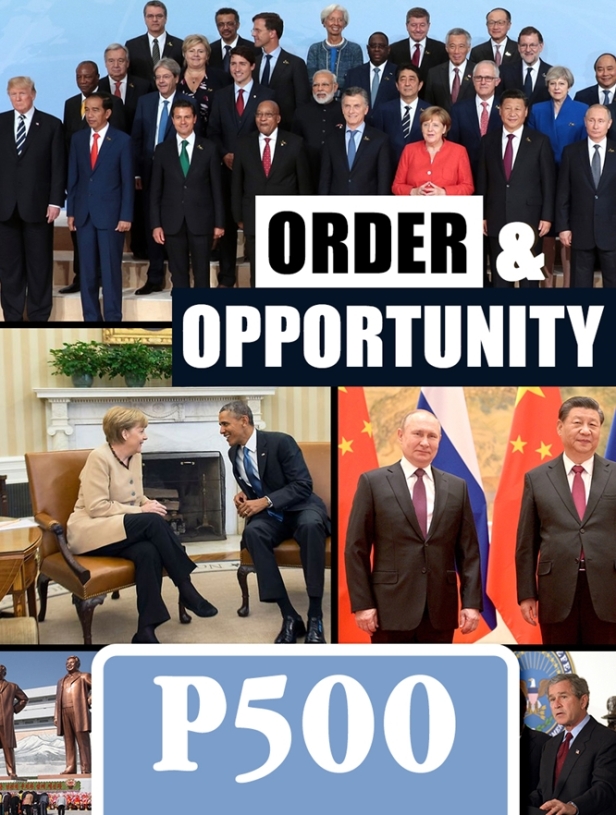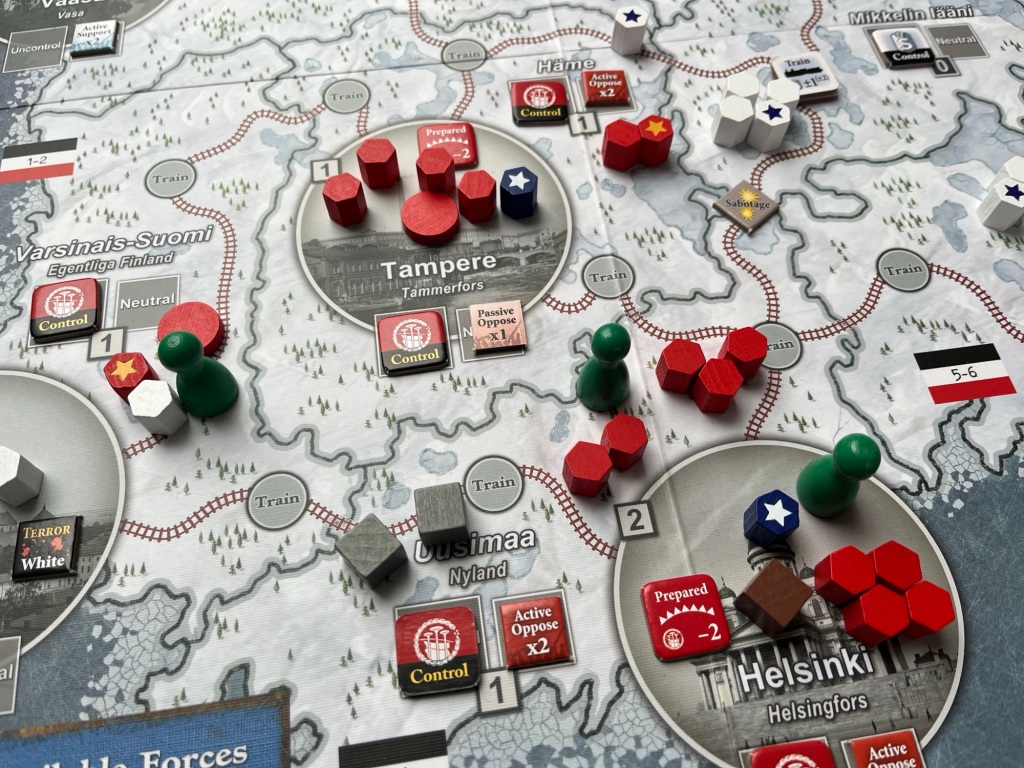We have been following the exploits of a newer designer V.P.J. Arponen over the past several years since his very unique entry into the COIN Series called All Bridges Burning broke in 2019. Since that time, he has been working on his new game called Order & Opportunity, which was announced by GMT Games in February 2023 and takes a look at the post-Cold War world order set in the first decades of the 21st century with the major powers of the United States, Russia, China and the EU controlling the direction of the agenda. Since that time, we have hosted an interview with Vez and also highlighted some of the cards in the game with our Event Card Spoilers Series.
If you are interested, you can check out that interview at the following link: https://theplayersaid.com/2023/08/21/interview-with-v-p-j-arponen-designer-of-order-opportunity-from-gmt-games/
If you missed the Event Card Spoiler entries covering the game, you can catch up on the posts to date by following the below links:
#12 War on Terror/Operation Enduring Freedom
#43 Belt & Road Initiative/Dependencies Created
#15 Intelligence Reform and Terrorism Prevention Act
Recently, Vez reached out to see if we would be interested in hosting a Designer Diary Series where he would go into the background on the design and how it has progressed over the past year. Of course we were interested and are excited to share the following with our readers.


My game Order & Opportunity: Making of the Post-Cold War World Order is currently available for preorder with GMT Games. In these design diary entries, I will be writing about various design choices that were made while developing the game over the past several years. In this first entry, I will start at the beginning and write about the origins of the game’s theme.
Personal Connection
I was already well into designing Order & Opportunity when I realized something about myself as a designer: I could really only keep an interest in designing a game to the theme of which I had a personal connection. The personal connection to my first published game — the COIN Series game All Bridges Burning (GMT Games 2019) on the Finnish Civil War of 1918 — is obvious. I’m a Finn. I was born and raised in Finland. The societal tensions that were at the heart of the civil war between the working class and the bourgeoisie still persisted three quarters of a century later as I was growing up. All Bridges Burning was a study to try to understand that central part of the Finnish history.

By contrast, Order & Opportunity deals with the post-Cold War history with a global scope. The reader might well ask, how on earth could a game with a scope like that have a personal theme to anyone?
Yet, in a funny way, it is an intensely personal design to me.
I got interested in the theme somewhere around 2010. Finland was at the time going through a kind of “populist revolt”, culture wars, and political polarization that only hit the global consciousness a good few years later. In Europe the Brexit referendum and in the US the run up to the 2016 US Presidential Election brought this new reality to the fore. Much like how the arrival of Trump and “America first” in the United States could split families along the increasingly polarized political lines, that I am sure many readers know from their own experience, so I was experiencing that same polarization within my own family. Some in the family became vehement supporters of if you like the “Finland first” point of view, and debates grew heated.
I was doing some soul searching to understand this new polarized political environment. How did Finnish democracy get here? How did established and stable democracies like the United States suddenly seem so politically polarized and fragile? To answer these questions one arguably has to first understand the post-Cold War period.
In Finland, the decades of my youth had seen a steady rise in average incomes and the general material standards of living. The benefits of the European Union, of “European unity” generally and globalization were palpable in the personal lives of many, certain in my and many of my peers. In Europe, early nationalist populism took the European Union as its target, similar to the strong isolationist tendencies seen in US politics today.
In the US election year 2016 and sometime thereafter, the debate was whether the political polarization had economic or cultural roots. I followed the writing of many in the global media as they explored the roots of Donald Trump’s popularity and of Brexit in Britain — among others Jeff Guo of the Washington Post, Edward Luce of the Financial Times, and John Harris of the British Guardian. They wrote reports of what they were seeing out “in the field”, from the Rust Belt of the United States to the North East of England. I felt like I understood why these people were angry because I was seeing similar post-industrial landscapes in my small Northern Finnish industrial home town.
At some point one of the key institutions of the free trade based post-Cold War world order, the International Monetary Fund (IMF), admitted that economic globalization was producing not only winners but also losers and that this was having an impact in elections. Political science was exploring the geographically uneven impact of global capitalism. It was making observations about the impact on communities of outsourcing and automation of industrial and increasingly also of non-industrial work. There was the gradual shifting of the economic power and the “center of gravity” measured in the volume of economic output from the West to the East.
As one disgruntled Baltimore docs worker Frank Sobotka put it in David Simon’s popular and brilliant TV drama series, The Wire: “You know what the trouble is, Brucey? We used to make shit in this country, build shit. Now we just put our hand in the next guy’s pocket.” Many also wrote about the cultural elements of polarization. One topic was, and still is, how the culturally conservative element of the population was feeling left behind in what the US political scientist Ronald Inglehart called the “silent revolution” towards more and more liberal cultural values. Others wrote about how particular regions, and increasingly men in particular, were falling behind in education, job prospects, and prosperity. All this happened in the context of an easy access to the subcultural echo chambers on the internet. Subcultures, some prepared to inflict violence, emerged around conspiracy theories and extreme political philosophies.
The emergence of social media enabled what most of human history would consider to be mere rumors, gossiping, and “talking crap” amongst a small circle of friends to “going viral”. A fit of anger could now reach an audience of maybe hundreds, thousands, even millions. At the same time, the social media platforms would have strong economic interests in amplifying controversial “hot takes” in order to increase clicks and traffic. Also, sophisticated misinformation operations by foreign states would sweep into this space and exacerbate existing disagreements where it could. Via observations like this, the post-Cold War history began to feel very very personal. If democracy, freedom and prosperity had won the Cold War, it now seemed to be eating itself up from within.
In the next installment, we’ll discuss further aspects of the post-Cold War period and relate them to game mechanics found in Order & Opportunity.

If you are interested in Order & Opportunity: Making of the Post-Cold War World Order, you can pre-order a copy for $55.00 from the GMT Games website at the following link: https://www.gmtgames.com/p-1027-order-opportunity.aspx
-Grant